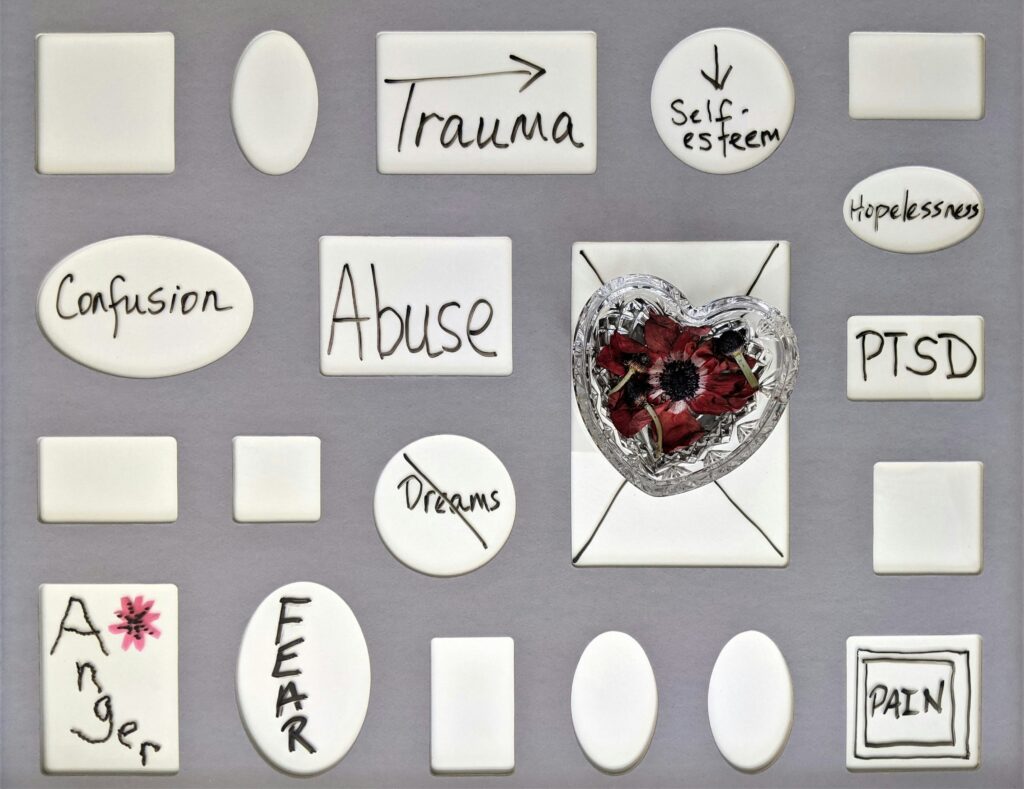
What You Need to Know About PTSD: Post Traumatic Stress Disorder
You may have heard the term PTSD thrown around casually in conversation when talking about dealing with a challenging experience, however PTSD is far from just a lighthearted topic.
PTSD stands for Post Traumatic Stress Disorder. It is a psychiatric disorder that can occur in someone who has experienced or witnessed a traumatic event or a series of events. Examples of a traumatic event can include a serious accident, physical or sexual abuse (either to themselves or to a family member), a terrorist act, wartime disasters, and more. It involves a situation where someone’s life or safety was threatened, or an injury actually happened. People suffering from PTSD feel stressed and afraid even when there is no present danger.
Read on for answers for some of the most commonly asked questions from patients and family members of those suffering from PTSD:
What are some common symptoms of PTSD?
Common symptoms of PTSD include but are not limited to:
– Reliving or remembering the trauma through intrusive memories, nightmares and dreams, or flashbacks
– Racing heart, sweating when experiencing flashbacks
– Avoidance of memories, thoughts, feelings, and situations that are associated with the trauma
– Hypervigilance, hyper-aware of surroundings
– Nervousness and anxiety
– Loss of interest in social activities or hobbies
– Extreme emotional changes or mood swings
– Trouble sleeping and/or nightmares
– Inability to focus
When do symptoms of PTSD occur after a traumatic experience?
One thing to note is that not every traumatic event will cause PTSD in a person. Some people will be able to recover without much intervention.
With that being said, severe and traumatic events that lead to PTSD can last for months or sometimes years. After a person experiences a traumatic event, they can start experiencing symptoms of PTSD within three months but sometimes the symptoms can emerge later.
How is PTSD diagnosed?
PTSD is difficult to diagnose because it has variable presentations. For example, some people experiencing PTSD may just be more irritable and angrier than usual while others shut down and become detached from others.
However those suffering from PTSD will generally avoid situations and places that remind them of the traumatic event in question. They will also likely suffer from either flashbacks, nightmares, or any other “re-experiencing” symptom for at least one month.
Mental health clinicians will try and determine if someone is experiencing PTSD by interviewing from a list of questions, drawing, play therapies for children, and simply observing.
What typical treatments are available for people with PTSD?
Early intervention is always the best. If someone experiences a traumatic event, it is always best to talk about it with a trusted counselor or professional sooner than later. Talking about the traumatic event rather than repressing it or trying to “get over it” can actually prevent PTSD from happening in the first place.
However if you have a child already experiencing PTSD, take steps to ensure the child’s safety and take steps to ensure they are not exposed to any stressors or triggers in their surroundings.
Psychotherapy will definitely be the first line of treatment we recommend for anyone experiencing PTSD, as it will help them consciously address the trauma head on. Understandably, many people who have PTSD do not want to talk about the trauma event; they would rather not remember those details again. However, repressing these memories will only make PTSD harder to control. Avoidance will only worsen the symptoms in the long run. A skilled therapist will help a patient tackle and reprocess their experiences at an appropriate pace and work through such repressed memories. The two types of psychotherapy we recommend for PTSD are Cognitive Behavioral Therapy (CBT) or “trauma CBT” as well as Eye Movement Desensitization Reprocessing (EMDR).
Sometimes, mental health practitioners will prescribe medications but not always. Medication will not be able to erase the past or help a patient reprocess their trauma. However, when someone is experiencing severe symptoms of PTSD such as extreme hypervigilance, uncontrollable anxiety, or sleep deprivation, medications can help give them some relief. However even with medication, the patient will need to also talk about their trauma through psychotherapy in order to heal their wounds.
Are there ways a parent or teacher can detect this disorder early on?
In addition to the symptoms as described above, look for sudden changes in behavior, speech, or emotions in a child under my care. If there are such sudden changes, you should ask your child if something has happened and also make sure they can feel safe in opening up to you.
Do not jump to asking your child triggering, specific questions as your child may still feel guarded. Instead, you can express that you are concerned about their well-being: “You are acting differently than before and I am concerned. Is everything okay? Did something happen?”
If the child feels comfortable opening up to you about a traumatic event, make sure to comfort the child and find help as soon as possible as early intervention is key.
What if this traumatic event actually did not occur, and the child is actually suffering from something else such as depression, social anxiety, or a panic attack?
We have seen instances where someone believes that a traumatic event has occurred but they actually imagined it. They may also be suffering from something else entirely such as depression, social anxiety, or a panic attack, but symptoms of these disorders can closely resemble those of PTSD.
Even in these cases, we must reassure the person of their safety and comfort them. We can say to them: “You are safe. I am here.” They may still be experiencing PTSD-like symptoms and they need to be comforted and reassured. Even if the event is imagined, it would be difficult to convince the child otherwise in such a heightened state.
A true PTSD diagnosis does require an actual threat or injury but that does not mean the symptoms the child is experiencing are invalid and does not require attention. It may be that they are suffering from another disorder.
Can you get PTSD from indirect exposure to trauma?
Yes, it is possible and we call this secondary trauma. Secondary trauma refers to a form of distress or trauma developed after hearing details or witnessing the consequences and aftermath of a traumatic experience by another person. Children can absolutely experience stress and anxiety when hearing about someone’s trauma.
This is why we advise parents to prohibit young children from watching the news if it is about disasters, deaths, or gruesome and horrible injuries. Children who are old enough to understand that the news report actually happened can develop PTSD-like symptoms.
What can a parent or teacher do when a child is actually having a PTSD episode?
A PTSD episode is similar to a panic attack. They may look agitated, confused, anxious, with eyes darting around. They may exhibit fight-or-flight response symptoms where their heart is racing, their fists are clenched, and their skin is pale and flushed. If you believe your child is having a PTSD episode, ensure that they are safe and also verbalize that: “You are okay, you’re here with me, and I’m not going to let anything harm you.”
Coach them to take deep, slow breaths with them. Helping them catch their breath will calm them down and ease up the tension locking into their body.
Try hugging and embracing your child from the side or behind as long as the child is not triggered by physical touch. Do not approach them from the front because they may think they are going to be attacked. If you are unsure, you could ask the child: “Can I hold you from behind to show you I am here and helping you?”
Speak calmly and ask them to tell you a bit more about what happened with questions such as: “Can you tell me what happened? What was in your mind?’
What about when a child is having an episode in the middle of the night?
Children who suffer from PTSD can experience intense and vivid nightmares. If your child is suffering from PTSD and having recurrent nightmares, it is fine to wake your child up fully.
Another thing we recommend is have your child do nightmare reversal training. This is where you ask your child to verbalize what the nightmare really was including all the details, and then have them imagine an alternative ending that no longer makes it a nightmare. The child can then repeat this nightmare back to themselves with the new, alternative ending on a regular basis and soon the nightmare will no longer be so scary.
Any words of encouragement for those suffering from this disorder?
First and foremost, it is possible to learn how to cope with PTSD and overcome these negative memories. It is possible to learn ways to not let these traumatic memories not overpower your life and destroy your peace. It is possible to lead a healthy life and have a healthy mindset even if you experienced something traumatic in your past. At the end of the day, your memories are not your present or future but if you let them, they can become your chains and your prison.
To reiterate, no one should suppress or avoid traumatic memories. They can fester and worsen over time. The only way to really overcome them is to face them head on and reprocess them.
Satan will use past events to keep your mind and your heart stuck in the past. Satan uses the evil things someone did to you to keep you unhappy, depressed, angry, and most of all, as separate from God as possible. This prison of your past memories can lead to feelings of hopelessness and despair.
Jesus Himself has experienced the ultimate trauma of leaving his Heavenly home, assuming the form of a human body, and experiencing a traumatic death just to free us from the bondage of sin. Jesus died for us so that we can enjoy a relationship with God and have eternal life. He did not save us so that we constantly feel imprisoned by evil acts by others and traumatic memories. This is why it is essential to get help as soon as possible so that you can break free from the prison of your memories and start healing mentally, emotionally, and spiritually.
You can watch the accompanying Anchor of Hope video here.
Enjoyed our blogpost? Subscribe to our newsletter for more resources on mental health and integrating the Gospel message in your healing journey.
If you found our resources useful, please consider donating to Oak Health Foundation, which is a 501(3)c nonprofit dedicated to providing resources regarding holistic mental healthcare and subsidized treatment for those in need.




